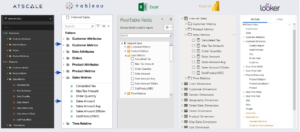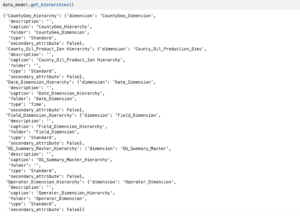July 14, 2022
Creating a Time Series ML Model with AtScale’s AI-Link, Snowflake, and FeastDefine and consume a universal semantic layer from your secure and governed Snowflake account.
AtScale is officially available as a Snowflake Native App in Snowflake Marketplace.
For those new to Snowflake Native Apps, they’re applications built using the Snowflake Native App Framework. As a Snowflake Native App, AtScale’s containerized application is deployed in your Snowflake-managed infrastructure, providing complete data control and security.
Let’s look at what this means for building a universal semantic layer in your organization.
A Universal Semantic Layer, Native to Snowflake
The implementation of a universal semantic layer typically stems from a combination of 4 objectives:
- Consistent business metrics for self-service analytics
- OLAP style (multi-dimensional) analytics
- Improving analytics query performance without data extracts or imports
- Analytics governance and security
As a Snowflake Native App, AtScale can be deployed from the Snowflake Marketplace. This lets you seamlessly launch AtScale’s universal semantic layer functionality within your Snowflake environment.
Once AtScale is deployed, you can securely access your data tables in Snowflake and start building your semantic data definitions by writing code using Semantic Modeling Language (SML) or using AtScale’s visual modeling interface.

The semantic models you define in AtScale represent the metrics, calculated measures, and dimensions your business consumers need to analyze to achieve their business objectives. After your semantics are defined in AtScale, they can be consumed by every BI application, AI/ML application, or LLM in your organization.
For BI-style reporting, Microsoft Excel (using MDX), Power BI (using DAX), and Tableau or Looker (using SQL) connect live to data in Snowflake without needing to move data. Each application provides consumers with the same defined semantic objects to ensure consistency across the organization.

When used with LLMs for generative AI use cases, the semantic data definitions enrich the AI’s ability to comprehend enterprise-specific context leading to more accurate, relevant, and nuanced content. Whether the data in Snowflake is tabular, text, images, or any other form of data in the future, providing semantic context for LLMs minimizes hallucinations, improves nuanced responses, leverages domain expertise, and allows organizations to make correct decisions on complex tasks.

AtScale pushes query processing to Snowflake, leveraging Snowflake’s highly performant, elastic computing capabilities. Additionally, AtScale creates aggregate tables on-demand that are informed by: user query patterns, AtScale’s machine-learning models, and data statistics. These aggregates are stored in Snowflake as tables. AtScale rewrites queries on the fly to utilize these aggregate tables when appropriate and avoids costly, and time-consuming raw table scans. All data optimizations are maintained within the customer’s Snowflake environment enabling organizations to meet their analytics performance expectations.
As a Snowflake Native App integrated with Snowpark Container Services, AtScale now runs entirely in your Snowflake-managed infrastructure, streamlining security and governance. Additionally, AtScale seamlessly integrates with your organization’s authentication and identity management tools, enforcing role-based access control at your Snowflake data’s row and column levels.
Get Started Today!
The AtScale Snowflake Native App allows you to deploy and implement a universal semantic layer inside your Snowflake account with just a few clicks. If you’re ready to start, check us out in Snowflake Marketplace or contact the AtScale team.
Power BI/Fabric Benchmarks